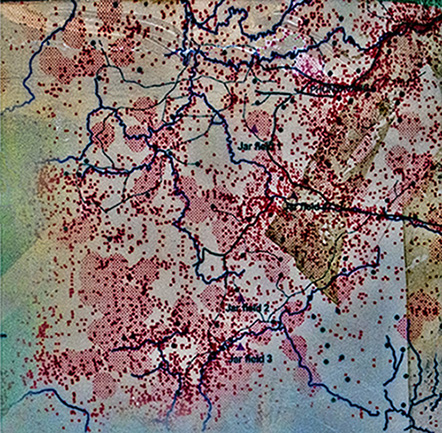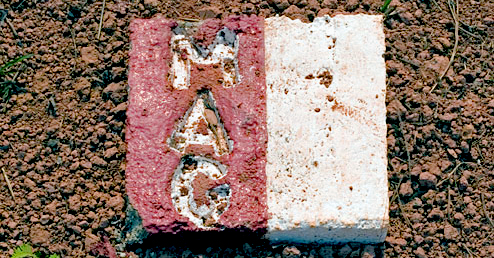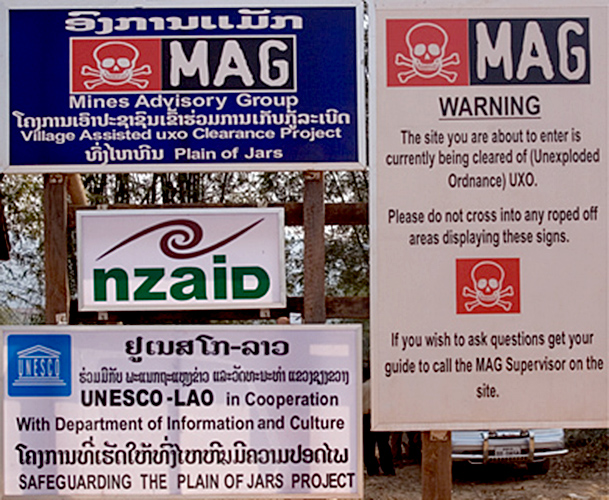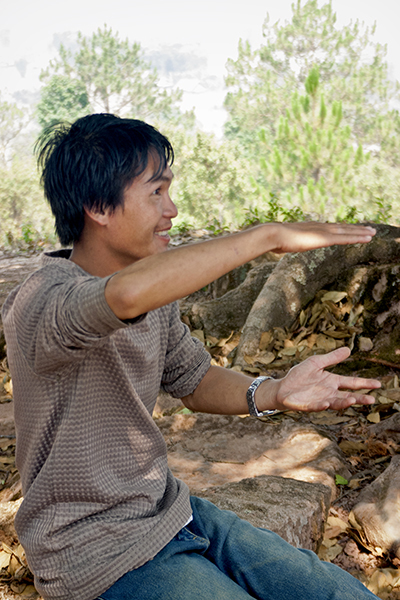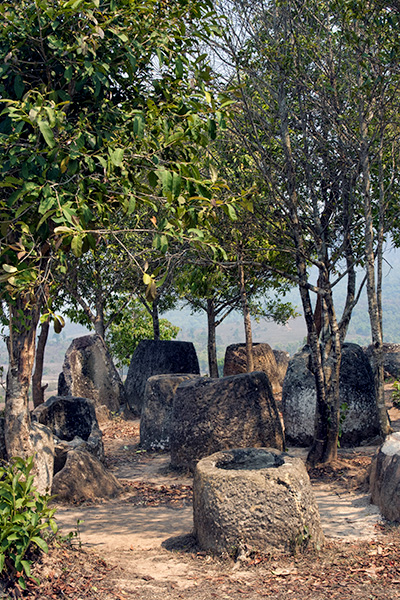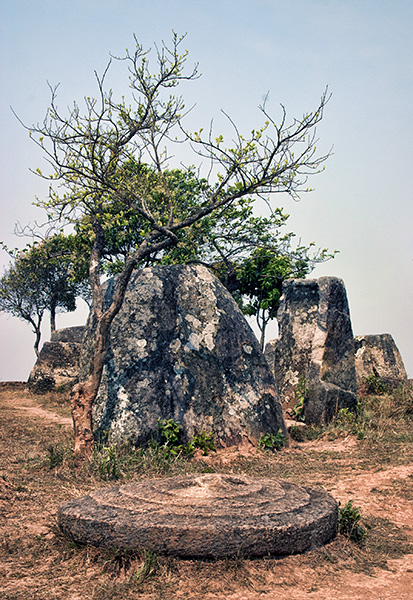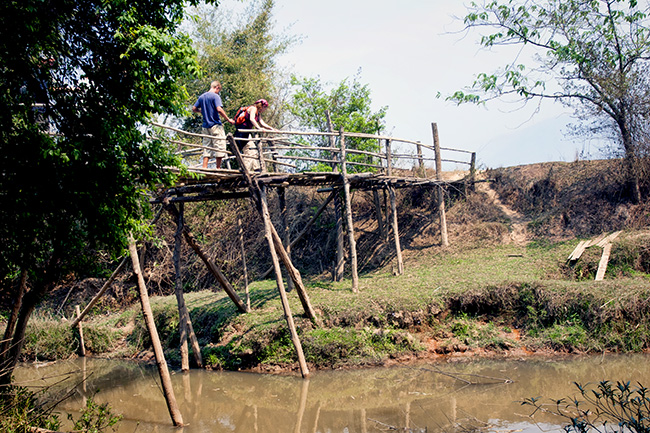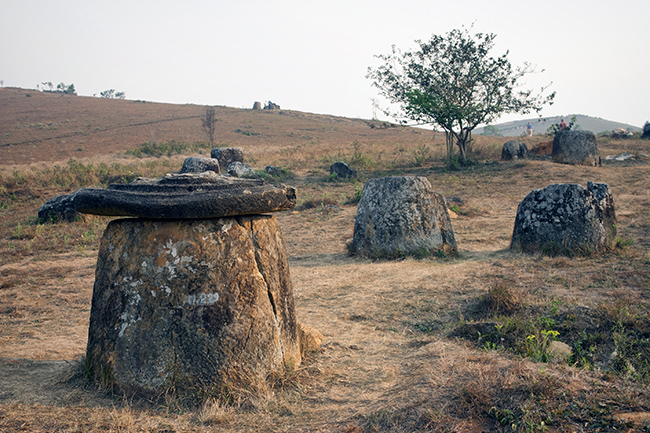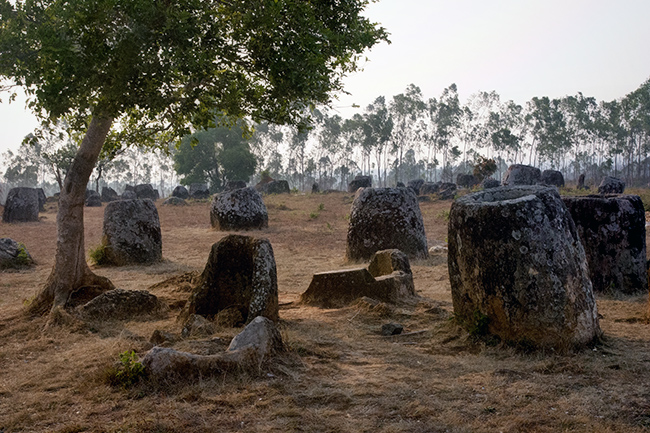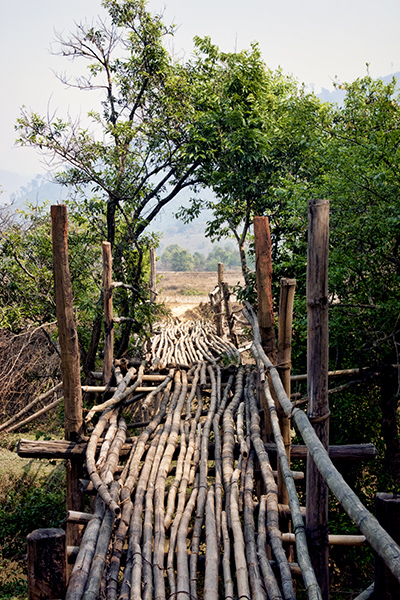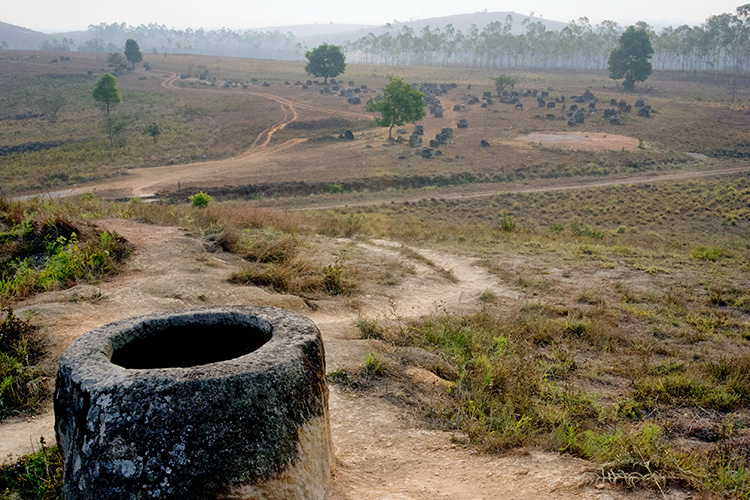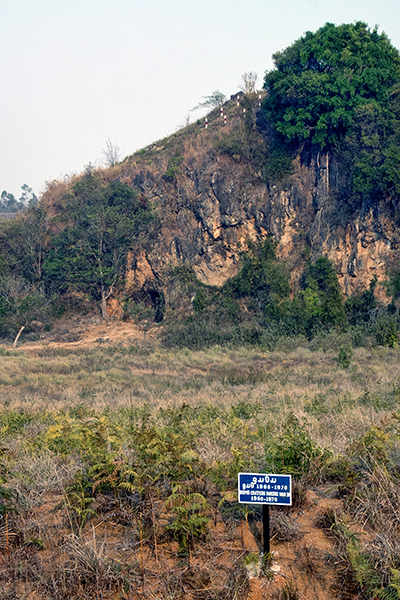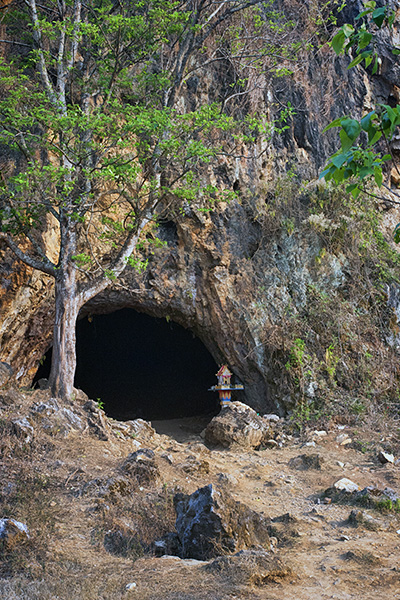Lee having
given us a scientific explanation, warmed to his subject and shared
another, this handed down through generations of Lao
It naturally involves a tyrannical ruler Chao Angkath,
and the local boy made good Khun Jeuam a Lao-Thai superhero who swept in
from China and liberated his down trodden masses. Such heroism
naturally needed rewarding, so jars were commissioned in which to
ferment the very strong local rice wine 'Lao Lao'
The jars were made from a mixture of buffalo skin,
sand. water and sugar cane then fired in a local cave which had a
natural chimney
It must have been a rave up as they forgot to clear
away the 'empties' leaving them scattered around the countryside |


